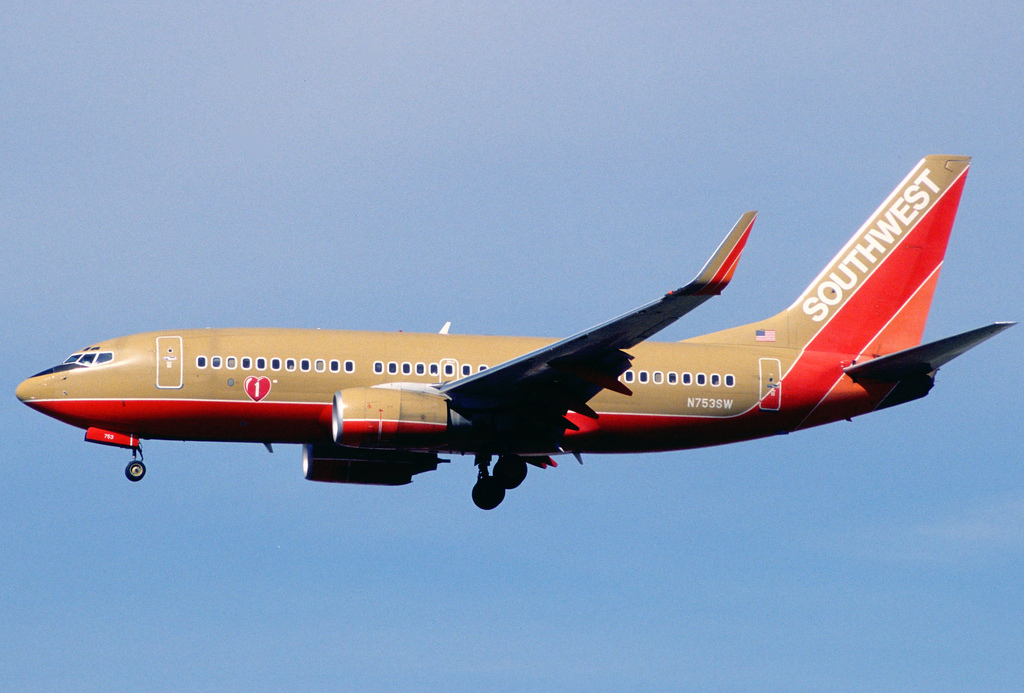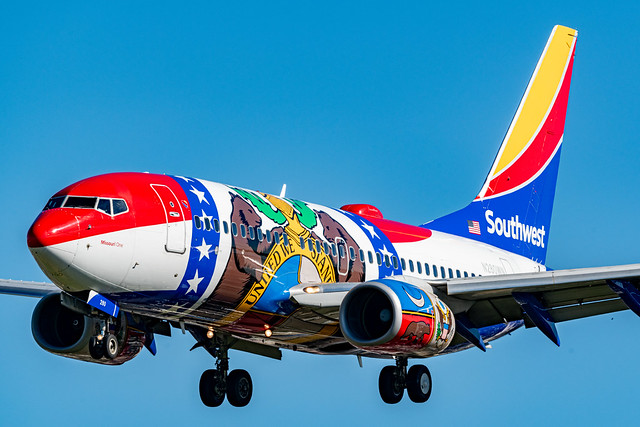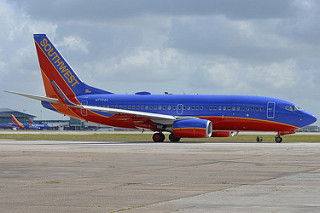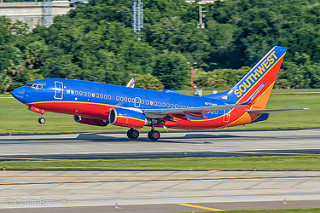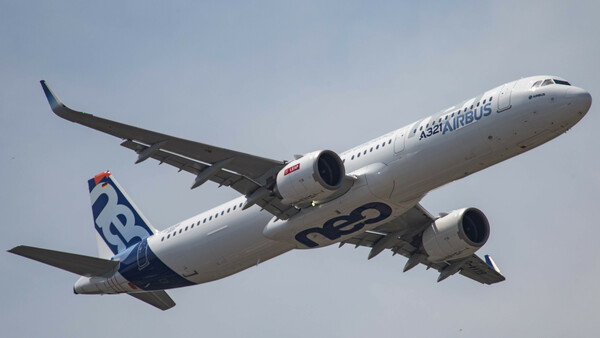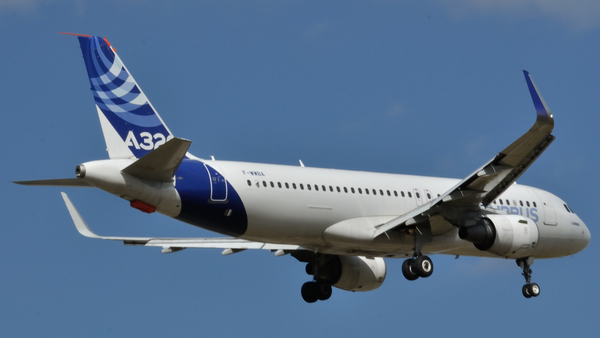Southwest B737 at New York on Jul 22nd 2013, nose gear collapse on landing
Last Update: July 23, 2015 / 19:31:05 GMT/Zulu time
Incident Facts
Date of incident
Jul 22, 2013
Classification
Accident
Airline
Southwest Airlines
Flight number
WN-345
Departure
Nashville, United States
Destination
New York La Guardia, United States
Aircraft Registration
N753SW
Aircraft Type
Boeing 737-700
ICAO Type Designator
B737
Airport
La Guardia Airport, New York
Airport ICAO Code
KLGA
The airline confirmed a nose gear collapse, 5 passengers and 3 cabin crew reported injuries and were taken care of by local responders.
The FAA reported 5 flight crew and 3 passengers received injuries in the occurrence rated an incident (!), after the nose gear collapsed on landing.
The NTSB have dispatched investigators on scene to collect information about the occurrence and assess the damage.
On Jul 23rd 2013 the NTSB reported, that an investigation into the occurrence rated an accident has been opened. The nose gear collapsed rearwards nd upwards into the fuselage damaging the electronics bay, the aircraft slid 2175 feet (663 meters) on its nose along the runway until the aircraft came to a stop off the right hand side of the runway. The occupants were evacuated via slides, which deployed normally. 9 people were treated for minor injuries as result of the evacuation. The flight data and cockpit voice recorder were already read out.
On Jul 26th 2013 the NTSB reported that the cockpit voice recorder contained 2 hours of good data including the entire flight from Nashville, the flight data recorder contained 27 hours of data including the flight from Nashville. According to the flight data recorder the flaps were extended from 30 to 40 degrees 56 seconds prior to touch down, the aircraft flared reaching 134 KIAS and an attitude of 2 degrees nose up at 32 feet AGL, then dropped the nose to 3 degrees nose down at touchdown at 133 KIAS about 4 seconds later. The aircraft stopped about 19 seconds after touchdown. Flight data as well as evidential videos suggest the nose gear made contact with the runway prior to the main landing gear.
On Aug 6th 2013 the NTSB reported that the aircraft encountered 11 knots of tail wind on ILS approach to runway 04, however, the wind on the runway however was 11 knots headwind. The first officer (5,200 hours total, 1,100 hours on type) was pilot flying during the approach, the captain (12,000 hours total, 7,900 hours on type) took control at 400 feet AGL. The investigation so far determined no mechanical malfunction, examination of the nose gear showed it failed due to stress overload. The crew reported, they had the runway in sight about 5-10nm out, the aircraft was on speed, track and glidepath until about 400-200 feet AGL. The NTSB added, the crew had been paired together for the first time, it was the second leg of their trip. The captain had flown into La Guardia two times prior to the accident, the first officer 6 times.
On Jul 23rd 2015 the NTSB released their final report concluding the probable cause of the accident was:
The captain's attempt to recover from an unstabilized approach by transferring airplane control at low altitude instead of performing a go-around. Contributing to the accident was the captain's failure to comply with standard operating procedures.
In the press release of Jul 23rd 2015 the NTSB argued: "NTSB found that the first officer was conducting the approach, and the captain took control away from the first officer, but not until the plane was 27 feet above the ground. This late transfer of control from the first officer to the captain resulted in neither pilot being able to effectively monitor the airplane’s altitude and pitch attitude. According to the Southwest Airlines Flight Operations Manual, the captain should have called for a go-around well before this point in the approach instead of trying to salvage the landing. For example, Southwest’s stabilized approach criteria require an immediate go-around if the airplane flaps are not in the final landing configuration by 1,000 feet above the ground. In this case, the flaps were not correctly set until the airplane was 500 feet above the ground."
The captain (49, ATPL, 12,522 hours total, 7,907 hours on type) was pilot monitoring, the first officer (44, ATPL, 5,200 hours total, 1,100 hours on type) was pilot flying.
The NTSB summarized short final and touchdown as follows:
The first officer stated that the autopilot was coupled to the ILS, the autothrottles were engaged during the approach, and the sink rate was about 700-800 ft per minute. Around 500 ft, he cross-checked the wind and recalled that there was a slight crosswind of around 11 knots. FDR data show that the autopilot was disconnected at 1743:50, when the airplane was somewhere between 385 and 361 ft radio altitude, and that the first officer was actively manipulating the flight controls after the autopilot was disengaged. The first officer stated that he began to transition to a side-slip maneuver for the crosswind by lowering the right wing and compensating with left rudder to align the airplane with the runway.
The first officer stated that the precision approach path indicator (PAPI) indicated two red and two white lights and that he was satisfied with the airspeed and crosswind corrections. He said he used the PAPI as his primary approach path reference but also cross-checked the ILS glideslope indicator. He said the airspeed fluctuated between Vref and Vtarget but was generally closer to the Vtarget speed. He recalled that there was about an 8-knot difference between the two speeds. FDR data indicate that the airplane was above glideslope about this time at 100 to 200 ft, reaching a maximum recorded deviation at 1744:23 just before touchdown.
The first officer stated that, as they crossed over the runway overrun area, he noticed that the PAPI indicated three white lights and one red, indicating that they were a little high on the glidepath. He knew that he would need to make a slight correction to land in the touchdown zone. The captain stated that she was looking through the heads up display (HUD) during the approach and was able to see the wind display on the HUD. When over the threshold, she thought the airplane was "groundspeed fast," the pitch was too low, and that they were not getting the right sink rate to the ground. She said she believed that if she did not act, the airplane would have continued to float past the touchdown zone. CVR data indicate that at 1744:14, she made the 100 ft callout then said "get down get down get down" about 3 seconds later. At 1744:23, the captain said "I got it," and the first officer responded "okay you got it." The airplane was about 27 ft radio altitude at this time. FDR data show that at 1744:36, the throttle resolver angles for both engines decreased to about 35º and that the recorded N1 values for both engines also decreased.
The first officer stated that after giving the captain control of the airplane, he scanned the altimeter and airspeed, but his visual focus was drawn outside the cockpit because of the rapidly approaching runway. The captain said that she was not certain what the pitch attitude was when she took control of the airplane but knew that it was not what it should have been for a 40º flaps landing, which she thought should have been around 5º. FDR data show that, shortly before engine power was reduced, the aircraft's pitch began to enter a negative (nose down) trend that continued to decrease to a minimum airborne value of -3.87º.
The captain reported that she increased back pressure on the controls to raise the nose and was increasing power as the airplane dropped to the runway. FDR data show that, just before touchdown, control column position for the captain and first officer remained near zero and that the throttles were advanced about 1 second before touchdown. The captain said that she saw the nose hit the runway and felt the impact, which she said was hard. The first officer also said that the airplane hit hard and that it felt like they landed nose first. He did not recall if they bounced. The airplane started sliding and veered slightly to the right before stopping on the right side of the runway centerline about 2,500 ft from its initial touchdown.
Metars:
KLGA 222251Z 13008KT 10SM SCT020 BKN080 OVC130 27/23 A2984 RMK AO2 SLP105 T02670228
KLGA 222158Z 04007KT 8SM SCT020 BKN080 OVC130 26/22 A2984 RMK AO2
KLGA 222151Z 04008KT 7SM FEW030 SCT050 BKN075 OVC130 25/22 A2985 RMK AO2 SLP106 T02500222
KLGA 222051Z 05012KT 8SM FEW028 SCT050 BKN070 25/22 A2986 RMK AO2 SLP111 60000 T02500222 56016
KLGA 221951Z 05011KT 8SM SCT030 BKN070 BKN150 BKN250 26/22 A2986 RMK AO2 RAE1855 SLP113 P0000 T02610222
KLGA 221851Z 04012KT 6SM -RA SCT030 BKN065 BKN150 BKN250 26/23 A2989 RMK AO2 RAB36 SLP122 P0000 T02610228
Aircraft Registration Data
Incident Facts
Date of incident
Jul 22, 2013
Classification
Accident
Airline
Southwest Airlines
Flight number
WN-345
Departure
Nashville, United States
Destination
New York La Guardia, United States
Aircraft Registration
N753SW
Aircraft Type
Boeing 737-700
ICAO Type Designator
B737
Airport
La Guardia Airport, New York
Airport ICAO Code
KLGA
This article is published under license from Avherald.com. © of text by Avherald.com.
Article source
You can read 2 more free articles without a subscription.
Subscribe now and continue reading without any limits!
Read unlimited articles and receive our daily update briefing. Gain better insights into what is happening in commercial aviation safety.
Send tip
Support AeroInside by sending a small tip amount.
Related articles
Southwest B737 at Cleveland on Oct 29th 2025, loss of separation with helicopter
A Southwest Airlines Boeing 737-700, registration N280WN performing flight WN-1333 from Baltimore,MD to Cleveland,OH (USA), was on final approach to…
Southwest B737 at Panama City on Jun 14th 2025, turbulence injures passenger
A Southwest Airlines Boeing 737-700, registration N969WN performing flight WN-3508 from Dallas Love,TX to Panama City,FL (USA) with 142 passengers…
Southwest B737 at Houston on Apr 17th 2025, engine shut down in flight
A Southwest Airlines Boeing 737-700, registration N7724A performing flight WN-3006 from Houston Hobby,TX (USA) to San Jose Cabo (Mexico) with 134…
Southwest B738 at Orlando on Mar 20th 2025, attempted to takeoff from taxiway
A Southwest Airlines Boeing 737-800, registration N8315C performing flight WN-3278 from Orlando,FL to Albany,NY (USA), was cleared for takeoff from…
Southwest B737 at San Diego on Aug 11th 2023, cleared to line up then forgotten, overflown by Citation on short final
A Southwest Airlines Boeing 737-700, registration N7734H performing flight WN-2493 from San Diego,CA to San Jose,CA (USA), was at holding point B1…
Newest articles
Wizz UK A21N at Prague on Sep 11th 2025, tail strike on landing
A Wizz Air UK Airbus A321-200N, registration G-XLRA performing flight W9-5775 from London Gatwick,EN (UK) to Prague (Czech Republic), landed on…
PIA A320 at Lahore on Jan 17th 2025, landed on wrong runway
A PIA Pakistan International Airlines Airbus A320-200, registration AP-BON performing flight PK-150 from Dammam (Saudi Arabia) to Multan (Pakistan)…
Subscribe today
Are you researching aviation incidents? Get access to AeroInside Insights, unlimited read access and receive the daily newsletter.
Pick your plan and subscribePartner

ELITE Simulation Solutions is a leading global provider of Flight Simulation Training Devices, IFR training software as well as flight controls and related services. Find out more.
SafetyScan Pro provides streamlined access to thousands of aviation accident reports. Tailored for your safety management efforts. Book your demo today
AeroInside Blog
Popular aircraft
Airbus A320Boeing 737-800
Boeing 737-800 MAX
Popular airlines
American AirlinesUnited
Delta
Air Canada
Lufthansa
British Airways
